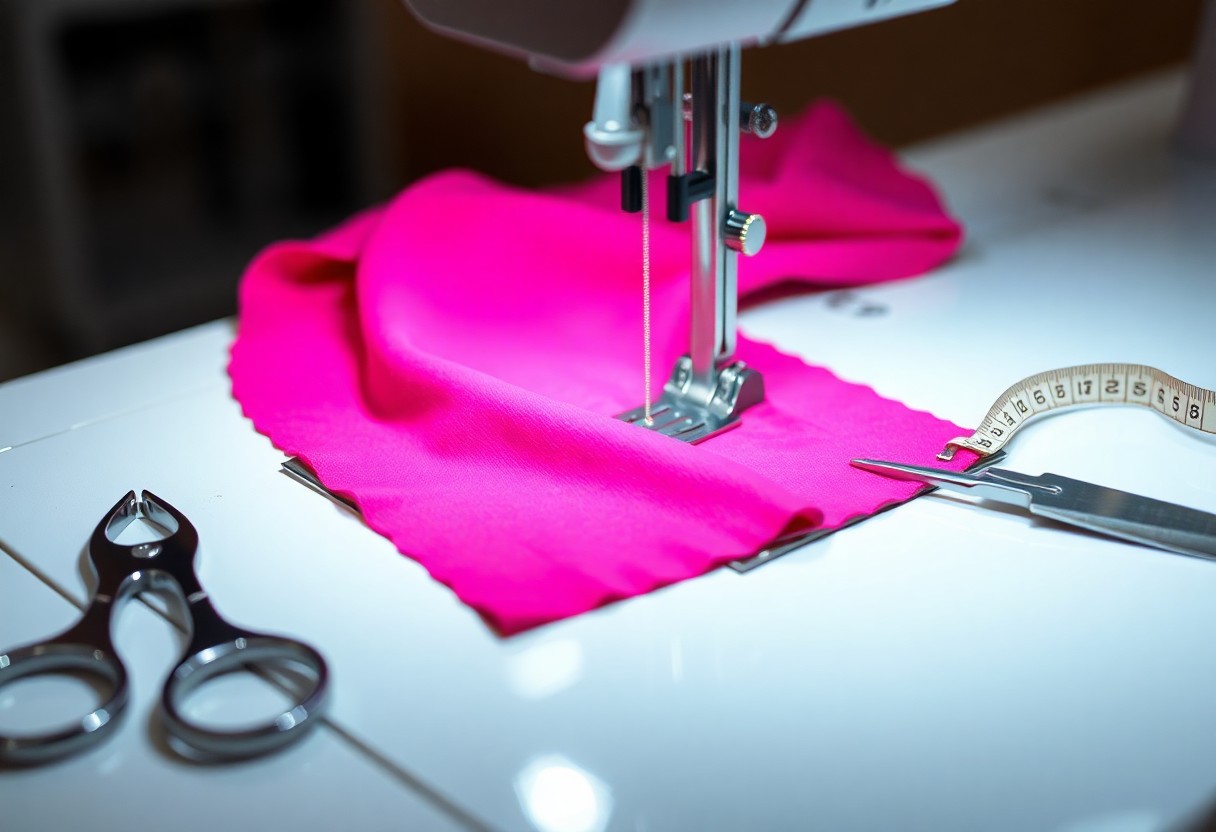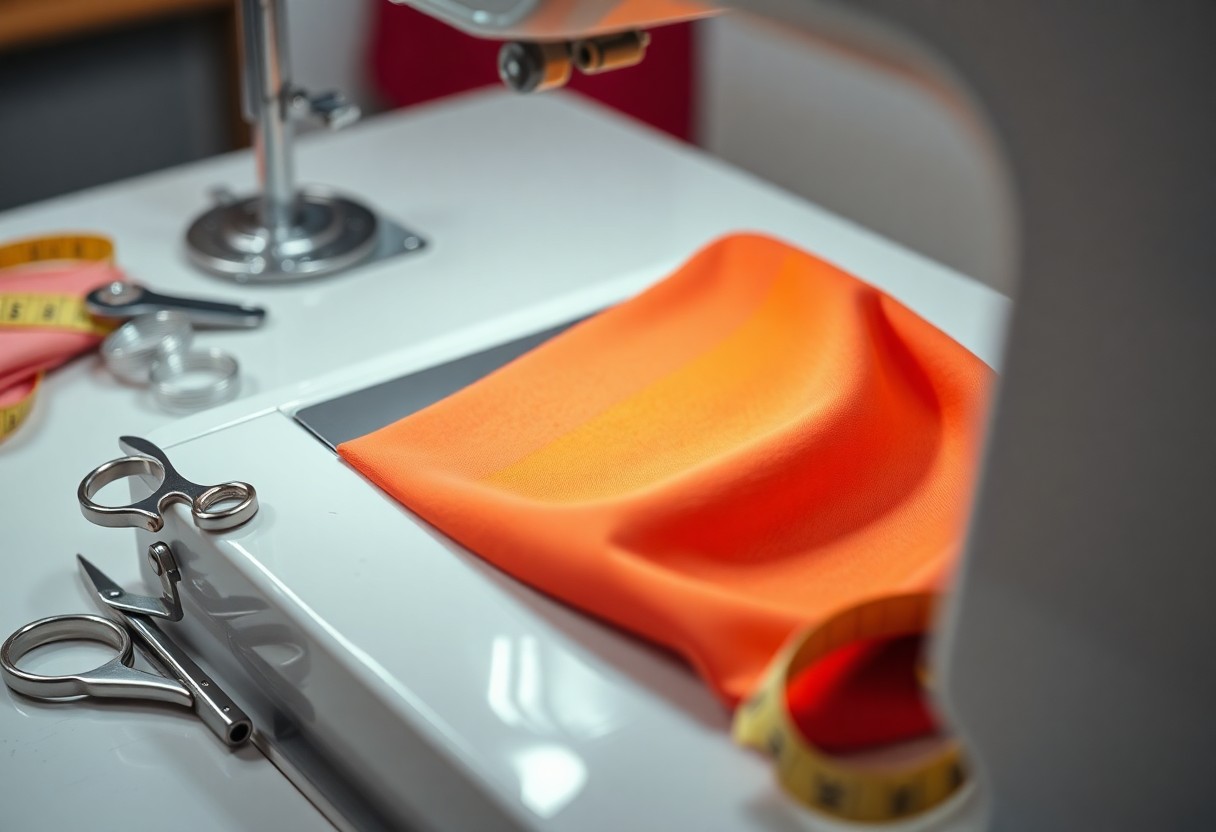It’s crucial to understand the techniques for sewing stretchy fabrics, especially if you want to master knits without the aid of a serger. You can achieve professional-looking garments by utilizing the right needle and thread, along with various stitch types suited for stretch. With your sewing machine, you can still create comfortable and durable pieces by focusing on tension adjustments and seam finishes that provide elasticity and strength. Follow these guidelines to elevate your sewing skills and enjoy the process of working with stretchy materials.
Secrets of Successful Stitching
Mastering the art of sewing stretchy fabrics hinges on understanding the unique characteristics of these materials and adapting your techniques accordingly. Success often lies in paying attention to detail, such as needle selection, thread choice, and stitch types. Each choice influences the fabric’s stretch, durability, and overall appearance, making these secrets crucial for achieving professional-quality results.
Choosing the Right Needle for Stretchy Fabrics
A ballpoint needle is your best friend when sewing stretchy fabrics. Its rounded tip slides between fibers instead of piercing them, reducing the risk of snags and runs. For thicker knits, consider a size 90/14 needle, while lighter materials benefit from a size 75/11 needle. Adjusting your needle type based on fabric weight can make a significant difference in your stitching outcome.
Ideal Thread Selection for Flexibility
Opt for a thread specifically designed for stretchy fabrics to enhance flexibility. Polyester thread is a strong contender, offering both elasticity and durability. Avoid cotton threads, as they lack the necessary stretch and may cause seams to break during wear. A 100% polyester thread will allow you to maintain seam strength without compromising fabric movement.
Consider using a thread that has slight elasticity, like a premium polyester or a cotton-wrapped polyester, which combines the softness of cotton with the stretch of polyester. This helps seams retain their shape even after multiple washes. Additionally, using a thread matching your fabric’s weight will prevent tension issues that can lead to thread breakage. Testing on a scrap piece of fabric before starting your main project ensures you’re set up for success, allowing you to achieve a flawless finish without compromising on the fabric’s integrity.
Essential Tools for Sewing Without a Serger
Having the right tools at hand makes sewing stretchy fabrics an efficient and enjoyable process. Start with a sewing machine capable of handling stretch fabrics, quality scissors or rotary cutters for clean edges, and good pins or clips to hold your fabric in place. Investing in a durable iron and a flexible measuring tape will also help you achieve precise results. Stock up on a variety of needles, especially ballpoint ones, designed specifically for knit fabrics to minimize snags and runs.
The Role of a Walking Foot
A walking foot is invaluable when sewing stretchy fabrics, as it helps to evenly feed the fabric through the machine while preventing shifting or stretching. This foot has additional feed dogs on top that grip the fabric, allowing for smooth, consistent stitching. Whether you’re working on quilting projects or garments, using a walking foot can greatly enhance your control over the material, ultimately leading to cleaner seams and a professional finish.
Exploring Stretchy Stitch Options on Your Machine
Different stitch options on your sewing machine play a key role in successfully sewing stretchy fabrics. Utilizing zigzag stitches, stretch stitches, or even a simple straight stitch with a longer length can accommodate the fabric’s elasticity. Each stitch type has its own advantages—zigzag stitches allow for more give, while stretch stitches are designed specifically to endure movement and prevent breakage. For knitted fabrics, many machines offer specialized stretch stitch settings, enabling you to select the best option for the project at hand.
Exploring machine settings is imperative for maximizing the potential of stretchy stitches. For instance, a standard zigzag stitch can be adjusted in width and length, allowing you to customize how much stretch your seams can endure. Alternatively, many machines feature preset stretch stitches specifically optimized for knits. Experimenting with these options will not only enhance the flexibility of your seams but will also result in a much more polished finish on your garments.
Techniques That Transform Your Approach
Embracing advanced sewing techniques empowers you to tackle stretchy fabrics with confidence and precision. By refining your skills, you’ll discover how to create professional-looking garments without the need for a serger. Each method enhances your understanding of fabric manipulation, ensuring that your projects turn out beautifully finished, with durability in mind.
Mastering the Zigzag and Double Stitch
Using a zigzag stitch provides the perfect balance of flexibility and strength for stretchy fabrics. This stitch stretches with the fabric, preventing breakage during wear. For added durability, incorporating a double stitch reinforces seams, making them less prone to fraying. Adjusting your machine’s tension settings is key; aim for a tight stitch that remains flexible and allows your garment to maintain its shape.
Hemming Strategies for Elastic Fabrics
Hemming elastic fabrics requires techniques that allow for stretch without compromising the integrity of the hem. You can employ a stretch stitch or a zigzag stitch to keep the hem resilient. Additionally, using a bias tape method can provide structure while still facilitating the necessary give. Proper fabric handling during sewing ensures a professional finish.
When hemming, consider using a walking foot to manage the fabric layers effectively, preventing shifting. Pinning or basting the hem in place allows for easier alignment and smoother stitching. For a clean look, try finishing with a serger or overlock if available, or consider a folded hem to enclose raw edges, which enhances durability. Each strategy not only enhances appearance but also supports the longevity of your garments, enabling them to withstand wear and movement.

Troubleshooting Common Sewing Challenges
Encountering issues while sewing stretchy fabrics can be frustrating, but identifying and addressing these challenges quickly is important. Problems like fabric bunching, skipping stitches, and puckering can hinder your progress and affect the final result. By understanding the root causes and applying effective solutions, you can achieve a smooth and professional finish, allowing your creativity to shine through in every project.
Addressing Fabric Bunching and Skipping Stitches
Fabric bunching and skipping stitches often stem from improper tension settings or using the wrong needle type. Ensure your machine’s tension is appropriately adjusted for stretchy fabrics, typically requiring a looser setting. Opt for a ballpoint needle designed for knits to prevent snagging and ensure smooth fabric feed, also helping to reduce skipped stitches.
Solutions to Fabric Puckering
Puckering can arise from inadequate tension, improper seam allowances, or using an unsuitable stitch type. When sewing stretchy fabrics, maintain a consistent tension throughout, and use a stitch designed for elasticity, like a zigzag or stretch stitch. Adjusting the differential feed settings on your sewing machine can help smooth out the fabric as you sew, promoting a flat seam and an overall polished look.
Reducing fabric puckering might also involve changing your approach to seam allowances. Consider sewing with a slightly wider seam allowance to accommodate stretch without distortion. Additionally, use a walking foot, which helps to sync the upper and lower layers of fabric, ensuring a more even feed. If puckering persists, you might want to try using a stabilizer; lightweight options can provide support without compromising the fabric’s flexibility. Experimenting with these adjustments will enhance your sewing experience and deliver better results.

Inspiration from Experienced Sewists
Engaging with the insights of seasoned sewists can invigorate your creative process. They often share their personal journeys, highlighting the importance of persistence and experimentation. Many emphasize the need to embrace mistakes as learning opportunities, which can lead to discovering innovative techniques and unique designs. This collective wisdom serves as a motivating reminder that your sewing journey is a continuous evolution, enriched by every project you undertake.
Lessons Learned from DIY Projects
Every DIY project presents a chance to refine your skills and learn valuable lessons. Many sewists recount their experiences where panic over minor errors turned into breakthroughs in technique or design. Each mistake can guide you to better understand fabric behavior, stitch selection, and adjustments, ultimately enhancing your confidence and creativity in future projects.
Community Insights and Best Practices
Joining a community of fellow sewists opens the door to a wealth of knowledge and shared experiences. Gleaning insights from others allows you to explore innovative solutions to common challenges, such as fabric handling and stitch tension. Participating in forums or sewing groups can introduce you to diverse techniques that you might not have considered, enriching your overall sewing repertoire.
In communities, you’ll find discussions centered around best practices that emphasize experimentation and adaptability. Many sewists benefit from sharing their tools and techniques, allowing you to try new methods without a large investment in equipment. For instance, using a walking foot can vastly improve your handling of knits, and it’s a favorite among many who have successfully navigated this fabric type. Real-life examples from others’ projects can inspire you to attempt new stitches, improve your cutting techniques, or customize patterns to better suit your style and body type.
Final Words
With these considerations in mind, you can confidently tackle sewing stretchy fabrics without a serger. By selecting the right stitch types, using appropriate needles, and ensuring proper tension, you’ll achieve professional-looking results. Embrace techniques like stabilizing edges and experimenting with different fabrics to expand your skills. Your ability to master knits will open up endless possibilities for creating comfortable and fashionable garments. Stay patient and practice, and you’ll enjoy a rewarding sewing experience with stretchy materials.
FAQ
Q: What type of needle should I use for sewing stretchy fabrics?
A: Use a ballpoint needle, as it has a rounded tip that can easily slide between the fibers of stretchy fabrics, preventing snags and damage.
Q: How can I prevent my seams from puckering when sewing knits?
A: To avoid puckering, use a stretch stitch or a zigzag stitch, and ensure the tension on your sewing machine is appropriately set for stretchy fabrics.
Q: Can I use a regular sewing machine for sewing stretchy fabrics?
A: Yes, you can sew stretchy fabrics on a regular sewing machine by utilizing specific techniques such as using the right needle, stitch type, and using stabilizers if necessary.
